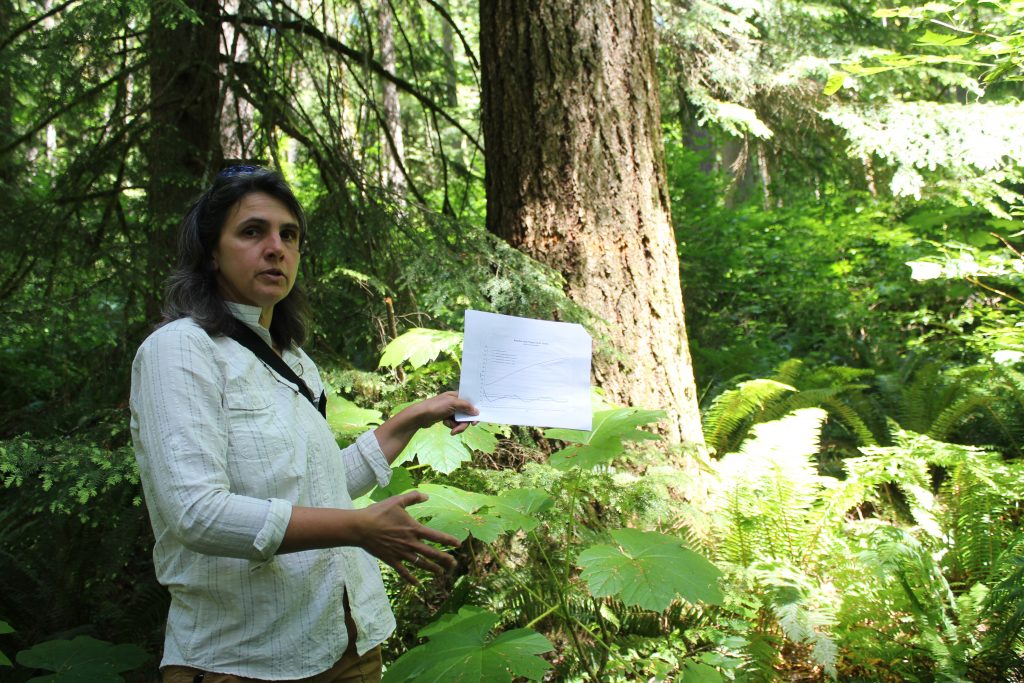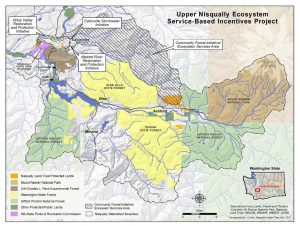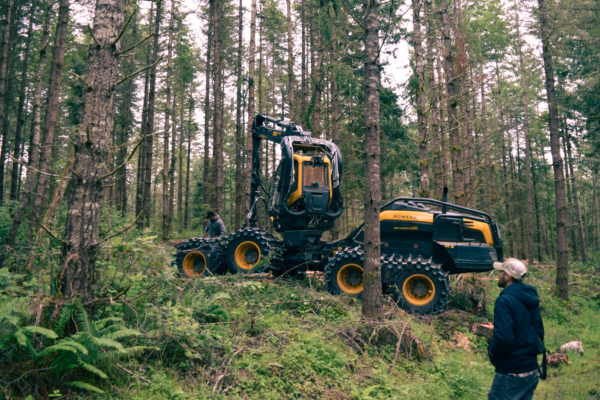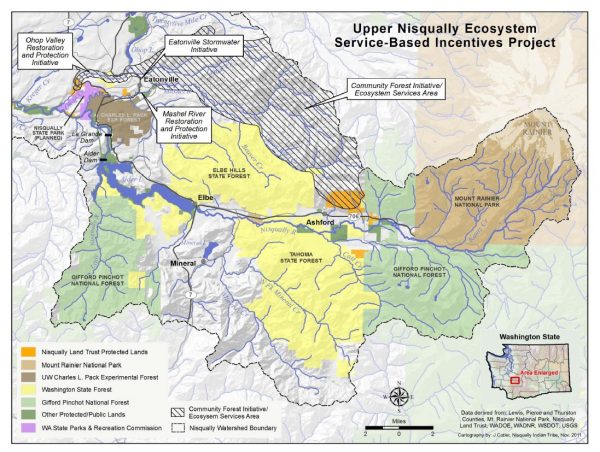Communities Stand Tall to Protect Forests
Washington’s forests work very hard to keep us healthy and happy. When they themselves are healthy, they provide ample clean water and a home for the fish we like to catch and eat as well as the iconic birds and animals we cherish. They inspire our hikes and mountain bike rides and give us gorgeous Pacific Northwest vistas.

Perhaps less known but still crucial, forests moderate stormwater flows to prevent flooding and the release of toxics into Puget Sound and other waterways. Forests keep soil from sliding off mountainsides. They absorb and store large amounts of carbon dioxide, which helps to stabilize our climate.
When privately-held forests are harvested carefully and at sustainable rates, we get all these benefits including economic support to our communities through logging, forest management, and milling jobs. When forests are lost to development or overly-intensive harvest, our quality of life and environment suffers.
Washington Environmental Council’s Evergreen Forests Agenda is all about protecting and restoring the eight million acres of privately-owned forestland in Washington so we can continue to benefit from all the amazing things that forests do for us. This hopefully gives you a real feel for what we are doing and for how closely connected and vital the Evergreen Forest Agenda is to WEC’s other two major efforts: protecting Puget Sound and combatting climate change.
The Nisqually Watershed and Community Forest

The Nisqually Watershed is located in the southeastern part of Puget Sound (see map). With headwaters in Mount Rainier National Park, it continues through the Nisqually Glacier and ends at the Nisqually National Wildlife Refuge on Puget Sound, just northeast of Olympia. The 78 mile long Nisqually River provides the largest source of fresh water to the southern half of Puget Sound.
Local groups working on land conservation and salmon restoration in the watershed founded the Nisqually Community Forest in 2011. They realized that most of the private forest in the area is owned and managed by entities who reside well outside of the area and whose economic interests are driven by investors from all over the world. The practicality of how these ownership interests play out means that the community’s well-being is not the driving factor for management decisions.
Nearly all the timber harvested from private lands in the Nisqually is exported to Asia, creating no mill jobs in the area. Rapid rates of harvest will not provide sustained levels of employment for area residents. In comparison, forests managed on longer rotations (letting trees grow for longer, and thus get bigger, before cutting them) provide listed fish species – such as Puget Sound chinook and steelhead trout – a better chance at recovery. Longer growing rotations also sequester more carbon; prevent water quality and drinking water concerns in downstream towns; and provide more habitat for spotted owls and marbled murrelets, threatened bird species found in the upper portions of the watershed.
Community forests have been used for some time around the country, especially in northeastern states. In general, their purpose is for local residents to have a more direct say in how forests in their area are managed.
The Nisqually Community Forest aims to eventually bring at least 30,000 acres of privately owned forest under its control and to manage the lands with these six goals:
- Create and sustain living wage jobs in the forestry sector for residents of the watershed
- Provide passive and active recreational opportunities
- Create a living laboratory for school-aged children and adults
- Provide a full suite of environmental services, including improving water quality and carbon sequestration
- Provide habitat for forest dependent species with an emphasis on recovering threatened and endangered species
- Design and create a management entity that can successfully integrate economic success, environmental protection, and community interests
WEC started working on the Nisqually Community Forest in 2012. The organizations making up the rest of the core team on this effort are the Nisqually Land Trust, serving as the parent organization to the Community Forest; the Nisqually River Foundation; and Northwest Natural Resources Group. Residents of the watershed serve on the planning committee, ensuring local views remain integral to the management of the community forest.
Contributing to the success of this project is important to WEC for many reasons, including that the health of the Nisqually Watershed is vital to Puget Sound recovery. A strong community forest movement can help solve similar forest sustainability issues in other parts of the Puget Sound region and the state.
This work illustrates the importance of other aspects of the Evergreen Forests Agenda, such as our work partnering with businesses to secure Corporate Social Responsibility funds. These funds, which support land acquisition and provide ecosystem service income like forest carbon credits, provide win-win scenarios for both businesses and communities.
The first land acquisitions in Nisqually are targeted for the upper Mashel basin, specifically in the Busy Wild watershed where forest restoration for steelhead trout, recreational access, and protection of viewsheds for the gateway to Mount Rainer National Park are important priorities. Once acquired, these lands will need thinning for habitat and growth and road restoration, all of which will support local jobs.
While we are still near the beginning of this adventure, the environmental and community benefits we foresee are well worth the effort. If you have questions about the Nisqually Community Forest, contact Paula Swedeen at paula@waconservationaction.org.



